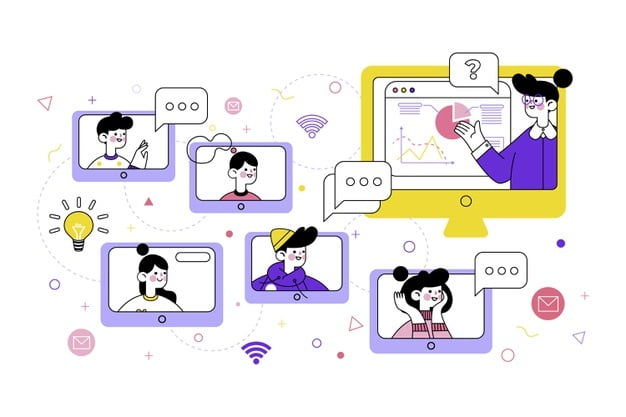Leverage Generative AI In Learning and Development

Let’s get started with generative AI in learning and development. As AI becomes more important in our lives, new advances in AI are being talked about, like Chat GPT and other AI capabilities that can create things.
In this article, we will talk about generative AI, which is still new. We will discuss what it is, how it works, and how it can be used in Learning and Development (L&D).
Read: Generative AI Tools and Their Powers In eLearning Design
Generative AI: What Is It and How Does It Work?
Generative AI is a special kind of computer learning that creates new things like words, pictures, or sounds using what it has learned from before.
Generative AI uses a type of advanced learning technology called generative adversarial networks (GANs) to make new stuff.
GANs, which stands for Generative Adversarial Networks, were invented in 2014 by Ian Goodfellow and his colleagues. GANs consist of two neural networks: one that generates new content and another that judges and evaluates the newly created content.
The two neural networks work like a game where if one network wins, the other network loses. The generator always tries to trick the discriminator, and the discriminator tries its best not to get tricked by the generator. They both keep learning from the new data they create.
Some instances of AI can create different things. For example, Chat GPT can make text, MidJourney can make images, Murf can make audio, and Codex can make new code.
Instances Of Generative AI In Learning and Development
MidJourney
MidJourney is a clever computer program that creates new pictures based on a suggestion. For instance, the clues can be like “a bunch of different people working on a project together seen from a top view,” “a picture of a lady sitting while using a computer,” or “A Santa riding a bike. ”
Once the Midjourney bot gets a hint that describes the picture in basic words, it takes probably a minute or so to create four picture choices.
This capability can be used for learning visuals, presentations, illustrations, and new creative ideas for images.
Codex
Codex is like a smart computer program that can create new code. It’s really helpful for making websites or writing code for software and technology projects.
Codex is really good at many different coding languages and can understand and change commands from regular language into code.
This is very helpful in Learning and Development because using a generative AI like Codex can assist instructional designers in creating website pages and modules for learning experiences. They don’t need to know coding to do this.
Chat GPT
Chat GPT is a type of AI software that can create sentences and communicate in various languages. It was created by OpenAI and is available for everyone to use and modify for free.
Chat GPT reads a lot of information from many different places, like articles, books, and Wikipedia. It can then quickly create text that makes sense and sounds real. Chat GPT uses advanced technology to understand and learn from a huge amount of written information.
It can recognize patterns and imitate how people speak. This allows Chat GPT to create text that sounds real and shows a lot of emotions when it is trained for certain jobs. Chat GPT is a tool that uses text prompts. You give it a prompt, and it generates text based on that prompt.
Chat GPT is an AI that can create things, but it has some problems. Sometimes it gives incorrect answers and it doesn’t understand everything. So, it’s important to be careful when using it to make learning stuff, pictures, or small learning parts.
Murf
Murf is a smart computer program that can quickly create professional voice recordings in different voices. AI-generated voiceovers can help in different ways, like learning modules, presentations, and podcasts.
Murf lets you choose and customize the gender, accent, pitch, emphasis, and interjections of a voice. You can use everyday language to explain the type of voiceover you want from over 120 text-to-speech voices and in more than 20 languages.
Murf is helpful in creating voice recordings for Learning and Development purposes, like voiceovers for learning courses, presentations, websites, and HR introduction videos.
Conclusion
According to McKinsey, the way humans and machines work together has been improving since the Industrial Revolution more than 150 years ago. There are three kinds of economic activity: making things, buying and selling things, and people working together.
Machines and technologies in manufacturing have made more things, and digitalization has made transactions better. Nowadays, generative AI can greatly affect how we interact with others, like in customer service and teaching, by imitating human engagement.
AI that creates things can be really useful in many areas, like Learning and Development. In this field, it can help make learning materials, pictures, and tiny lessons.







